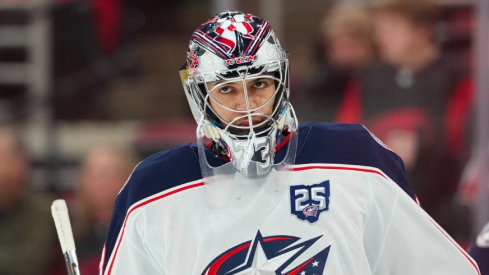“Playmaker” is a term that’s thrown around a lot in sport, but what does it mean?
Sometimes, in hockey, we call someone a playmaker because they make an insane pass, or we look at a player’s assist total and say “See? Makes things happen!” but we haven’t always had ways to truly measure “playmaking.”
We may not be fully there yet, but we can start to look more closely at players who make offense happen – specifically through shot assists (passes that lead to a teammate’s shot) and the types of passes a player is completing. This public data is thanks entirely to the tireless work of Corey Sznajder (whose work you should support HERE).
So who helped make offense happen for Columbus this season?
Let’s dig in.
Thus far, Sznajder has tracked just around half of the Blue Jackets’ season, but the data he has tells us some things about last year’s team.
The “Nyfty” Blue Jacket
Gustav Nyquist was the lone offseason acquisition for the Blue Jackets last summer, and people who weren’t paying attention scoffed at this player being the choice to “replace” Artemi Panarin. But that’s not why Nyquist was signed. The Swede was viewed as a reliable, quietly creative player who could help make plays.
And that’s what he did.
In 5-on-5 play of the games Sznajder tracked, Nyquist led all Blue Jackets not just in shot assists (83) but also in some of the most dangerous types of passes – he had a team high 22 “low to high” passes (which attempt to spread out the defense) and his nine “royal road” feeds (passes that cross the slot, challenging a goaltender to move laterally) led all Columbus skaters.
So Nyquist was not just setting up his teammates to score goals, he was doing so with quality.
(Style points for this coming on the penalty kill, too.)
Centering the Attack
While Nyquist was a big contributor, Pierre-Luc Dubois was right there nipping at his heels. The center trailed Nyquist by just one shot assist (82) and led the team in feeding shots off his passes from the neutral zone (10) – perhaps signaling an ability to move the puck more quickly into the offensive zone than taking time to set up a play.
Dubois also was effective down the right side – feeding passes down that lane 20 times.
Active Defense
Everyone talked about how Columbus buckled down defensively last season, and they did! But that active defense mentality (buoyed by two rovers in Seth Jones and Zach Werenski) meant the blue line was often contributing not just defensively, but offensively as well.
"Active defense" usually means joining the rush. Columbus does that, but this also shows how active they are in the offensive zone with creating shots off dangerous passes. pic.twitter.com/lLdLlt91tp
— Corey Sznajder (@ShutdownLine) October 14, 2020
As Sznajder’s tweet highlights, when it came to generating shot assists, two of the top 10 performers on the Blue Jackets’ roster were defensemen: David Savard (56 shots assists), and Seth Jones (46 shot assists). Those two were also able to effectively utilize their side of the ice with 30 and 16 right lane passes respectively (ss mentioned, Dubois joins them in the top three).
Are the Blue Jackets Actually Good?
We can quickly see some high performers from a passing perspective, but that’s looking at just the Blue Jackets in isolation.
How did they stack up against the other 30 teams in the league? Of course passing data answers this question in isolation of systems analysis and a further examination of overall play (which should be done, but that’s for another day) but if we look at league averages, only five teams had more assisted shots than Columbus did this season (945) and the home team’s total was well above league average (715).
Interestingly, however, they also allowed more shot assists than league average – permitting 267 compared to the mean value of 208 (this does not contemplate the quality of the resulting shots allowed, of course).
And what’s more compelling is that, given Sznajder’s current tracking efforts, Columbus exceeded league average in some of the most dangerous types of passes – executing 54 royal road shot assists compared to a league average of 39; and holding steady with 160 low-to-high passes in a league that averaged 157. This begs the question of what happened to the ability to finish? Something we’ll continue to explore in our finishing series.
How the Blue Jackets want to attack will always supersede the value of a pure “pass count,” but there is reason to like how the team was able to move the puck this season when we start to investigate and value the work that comes before a shot that hopefully becomes a goal.
All data via Corey Sznajder; all data represents 5-on-5 play

